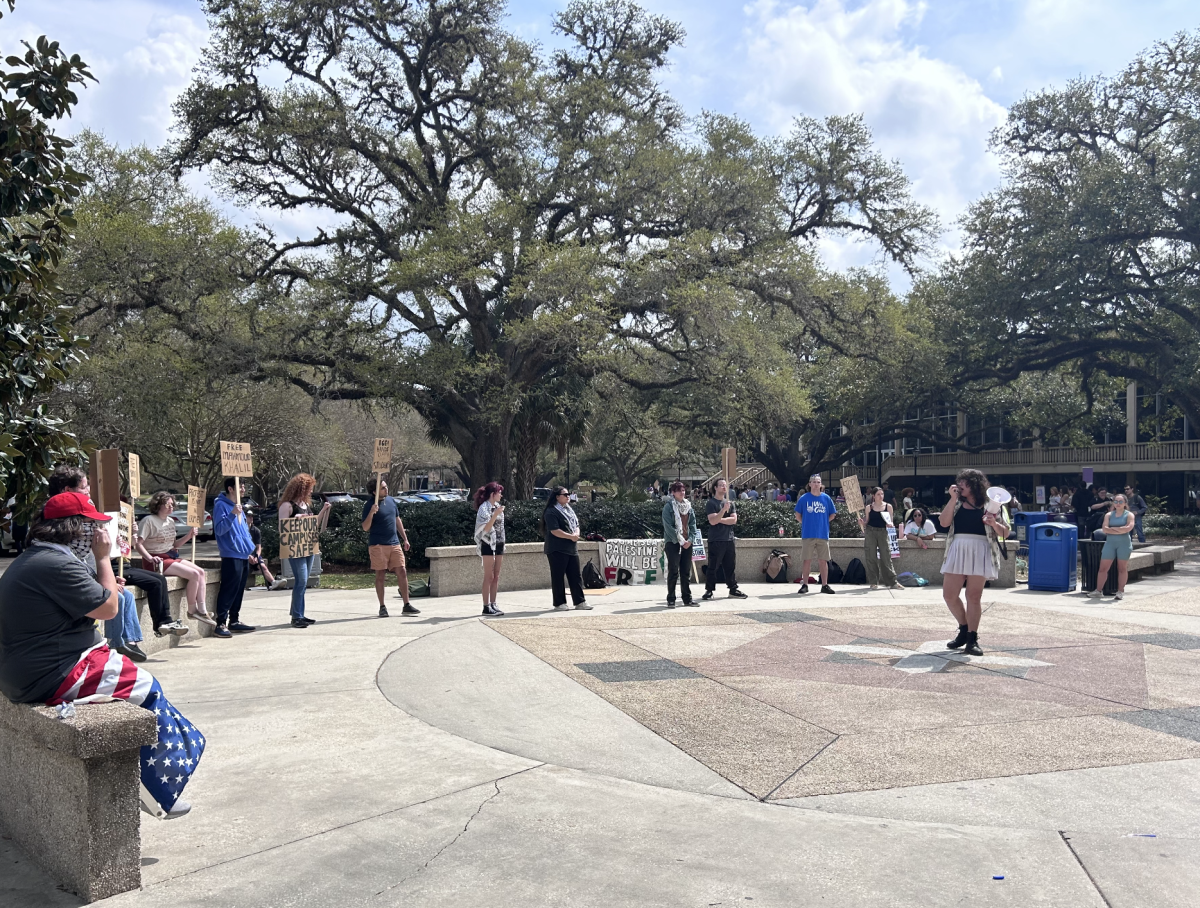To see a slideshow of students’ tattoos and what they mean, click here.Phoenix MacAiodh stands out in most of his classes — not just because of his bright red beard. MacAiodh, general studies senior, has four large tattoos, including a character for fire and a Nordic rune on his forearms and another character for phoenix on the back of his neck. MacAiodh said he experiences a wide spectrum of responses to his tattoos. But he has noticed a growing acceptance of his body art during the last five or six years. “I kind of see the tattoos as an outward manifestation of an inward spirituality,” MacAiodh said.Robert O’Neil, sociology instructor, offers introductory sociology students extra credit to participate in a survey about acceptance of tattoos. O’Neil does not keep total percentages from each semester he conducts the survey, but adds the results to a cumulative number. The cumulative percentage of students opposed to tattoos through 2005 was 23.7 percent, while the total opposed through 2009 was 22.7 percent. O’Neil said students have become more polarized; the percentages of those who have strong feelings for and against tattoos have both increased in the past decade.”TATTOO RENAISSANCE”Timothy Brown, graduate student and sociology of deviance instructor, said society is experiencing a “tattoo renaissance.” He said prior stigmas associated with tattoos are dissipating as body art becomes a bigger part of popular culture. “It’s no longer thought of as something that’s archaic or deviant or criminal,” Brown said. Brown said stigmas about tattoos are fading, but he said most people still do not approve of multiple, large and visible tattoos. MacAiodh said he gets some glances at his forearm and neck tattoos, but most comments are positive. He said he was once complimented by a 70-year-old woman. Richard Hart, tattoo artist at The Ink Shop on Coursey Boulevard, said almost all of his clients are between ages 18 and 25. Hart previously worked at Atomic Tattoo on Lee Drive where almost all of his clients were college students. He said The Ink Shop plans to relocate to Brightside Drive to be closer to its target market on campus.He said many college students get tattoos to exert an ownership of their bodies, but he worries tattoos are becoming a fashion statement. He said some clients are not concerned with finding a unique or meaningful design. “They’re buying tattoos almost like they’re buying stickers for their truck,” Hart said. He said stars and fleurs-de-lis are the most common requests at the Shop. Hart said the growing acceptance of tattoos is more of a trend among college students than in society as a whole. “There is still a lot of bigotry out there associated with the tattoo industry,” he said.Hart said The Ink Shop had trouble finding a property to rent to set up business because of lessor prejudices against tattoo shops.BODY ART REGRET Reeves Durham, Louisiana Laserderm owner, said most of her patients are young professionals who want to remove a tattoo they got during college. She said some clients’ employers require them to remove tattoos. Removal typically involves four to seven treatments ranging from $75 to more than $200 per treatment, Durham said. Rosemary Peters, French assistant professor, got her first tattoo — a lizard on her foot — as a 28-year-old doctoral student at Harvard University. She said she doesn’t regret any of her six tattoos, five of which are usually visible. “I’m much more forthcoming with them now,” Peters said. “My first year as a faculty member, I wore long sleeves and opaque tights all the time.” Peters said her tattoos usually aren’t visible at work, mostly because she often gets cold and regularly wears long sleeves. “Honestly, at the time when I got the most visible tattoos … I’m not sure that I really made the connection with my later professional life,” Peters said. Sara Crow, Career Services assistant director of communications, said visible tattoos might inhibit students applying for traditional office jobs. But she said certain employers view tattoos positively. Crow said students might consider toning down “things that other people might use to exclude [them] from job opportunities,” but said Career Services doesn’t have a policy of advising students to cover tattoos or remove piercings before interviews. “We would never encourage a student to squash their personality in an interview,” Crow said. MacAiodh said he got his first tattoo across his chest because he planned to stick to only tattoos he could cover with clothing and not potentially limit his future job opportunities. He now has tattoos on both forearms and said he does not think he will have trouble finding library sciences work at a university.”People are starting to learn that people with tattoos are not just crazy freaks or hippies, that they’re a broad spectrum of people,” MacAiodh said. Crow said she encourages students with tattoos to research company policies to determine whether the employer embraces tattoos and piercings, and she advises students to consider the long-term impact of getting visible tattoos.—-Contact Emily Holden at eholden@lsureveille.com
Students becoming more accepting of tattoos
September 2, 2009



